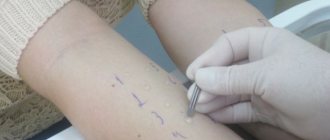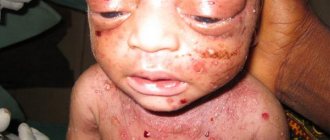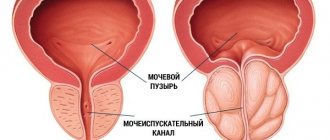Published: 09/14/2021 11:00:00 Updated: 09/14/2021
Malaria is one of the most common infections worldwide. Children under 5 years of age and pregnant women are especially susceptible to the disease [1]. Infection occurs through the bite of a mosquito, which acts as a carrier of the pathogen - malarial plasmodia. The most dangerous is tropical malaria, caused by the parasite Plasmodium falciparum.
The disease is characterized by periodic increases in temperature, enlargement of the liver and spleen, and decreased hemoglobin levels. The first symptoms are usually mild, so the infection is most often diagnosed at a late stage, when severe damage has already developed. In this regard, the fight against malaria is based on timely detection and effective treatment of the infection. For prevention, insecticides are used to destroy vectors and vaccines against pathogens.
Description of the disease
Malaria is a deadly infectious disease. Another name is swamp fever.
The causative agent is the parasite Plasmodium, which enters the human blood through the bite of an Anopheles mosquito, the carrier of the infection. The pathogen is capable of destroying red blood cells, and as it multiplies, it infects more and more red blood cells.
The disease is widespread in Vietnam, India, Brazil, on the island. Sri Lanka, Colombia and some African countries.
The latent period of malaria ranges from eight to 25 days, and can extend to several months.
Main routes of infection:
- bite of a female malaria mosquito;
- during childbirth from a sick woman to a baby;
- during a blood transfusion from a person infected with malaria;
- when injected with a syringe used by a carrier of the disease.
Malaria can be:
- tropical. The most common and dangerous type;
- four-day, when the attack resumes after four days;
- three days, during which attacks occur more often.
If a person has suffered from the disease and recovered, then immunity can only be developed after a year or after suffering the disease multiple times. Immune defense is not highly effective, since it is active only against certain types of parasites, but the manifestations of the disease will no longer be so pronounced.
Insecticide treated mosquito nets
The use of insecticide-treated mosquito nets (ITNs) during sleep may reduce the likelihood of mosquito-human contact through both the presence of a physical barrier and exposure to the insecticide. Mass eradication of mosquitoes in areas where such nets are widely available and actively used by local residents can provide protection to the entire population.
In 2021, insecticide-treated nets in Africa protected about 46% of all people at risk of malaria, up from 2% in 2000. However, ITN coverage has shown little growth since 2021.
How does malaria manifest?
Symptoms of malaria can take as long as a week or a month to appear. The infected person complains of:
- feeling of weakness;
- increased sweating;
- feverish condition;
- headache.
At first, the symptoms are mild, but over time the condition worsens.
The main symptom of malaria is the cyclical nature of symptoms. The acute phase lasts from six to ten hours, then the condition improves for a period of two to five hours. When the severity of symptoms decreases, the person sleeps deeply. After two or three days, exacerbation begins again.
The disease can also be suspected if:
- aches in joints;
- loose stools;
- temperature increase;
- enlarged spleen and liver;
- anemia;
- attacks of nausea and vomiting;
- failures of cardiac activity.
The first signs of malaria are a reason to immediately consult a doctor; the disease cannot be treated at home, as it can be fatal.
Who is at risk?
In 2021, nearly half the world's population was at risk of malaria. Most malaria cases and deaths occur in sub-Saharan Africa. However, WHO regions such as South-East Asia, the Eastern Mediterranean, the Western Pacific and the Americas are also at risk.
The risk of contracting malaria and developing severe disease is significantly higher among some groups of the population. These groups include infants, children under five years of age, pregnant women and people with HIV/AIDS, as well as non-immune migrants, mobile populations and travelers. National malaria control programs need to take special measures to protect these populations from malaria infection, taking into account their specific circumstances.
Why is malaria dangerous?
Malaria is life threatening because it affects various organs and can cause:
- parasitic infection of the body;
- acute impairment of all renal functions;
- heart failure;
- accumulation of fluid in the brain (brain edema);
- mental disorders;
- malarial coma followed by death.
How the disease develops is determined by the type of pathogen. Children under 5 years of age experience the disease more severely than older patients.
Diagnosis and treatment
Early diagnosis and treatment of malaria helps reduce the severity of the disease and prevent death. These measures also help reduce the intensity of malaria transmission. The most effective existing treatment regimen, especially for P. falciparum malaria, is artemisinin combination therapy (ACT).
WHO recommends that in all cases of suspected malaria, the diagnosis be confirmed using a diagnostic test to identify the parasite (microscopic examination or rapid diagnostic test) before starting treatment. The period for obtaining parasitological confirmation is up to 30 minutes. The decision to carry out treatment based solely on clinical symptoms can only be made in cases where establishing a parasitological diagnosis is impossible. More detailed recommendations are available in the third edition of the WHO Malaria Treatment Guidelines, published in April 2015.
Malaria screenings
To make a diagnosis in the infectious diseases department:
- are interviewed for complaints;
- blood is taken for general and biochemical analysis;
- smears are examined for the presence of parasites. To do this, blood from a vein and finger is examined;
- urine is taken for general analysis.
As a rule, the first test does not confirm the disease, so blood is taken again after a few hours.
With malaria, the following changes in the composition of the blood will be found:
- decreased hemoglobin levels and red blood cell levels;
- increased concentration of leukocytes and platelets;
- the color index may be reduced or within normal limits.
The urine will contain hemoglobin, blood clots and red blood cells. Blood biochemistry will show an increase in bilirubin, ALT and AST, albumin.
The doctor makes a diagnosis based on information about a person’s stay in regions where swamp fever is widespread, based on characteristic symptoms, and also based on the results of laboratory tests.
Insecticide resistance
Since 2000, progress in malaria control has been achieved largely through increased coverage of vector control interventions, particularly in sub-Saharan Africa. However, these achievements are under threat due to the increasing resistance of Anopheles mosquitoes to insecticides. Between 2010 and 2021, cases of mosquito resistance to at least one of the four most common classes of insecticides were reported in 73 countries, according to the latest edition of the World Malaria Report. In 28 countries, mosquito resistance to all major classes of insecticides was observed.
Despite the rise and spread of mosquito resistance to pyrethroids, insecticide-treated nets continue to provide significant levels of protection in most areas of human activity. This was confirmed by the results of a large study coordinated by WHO in five countries between 2011 and 2021.
Despite the encouraging results of this study, WHO continues to reiterate the urgent need for new and improved tools to combat malaria worldwide. WHO also emphasizes the urgent need for all countries where malaria transmission continues to develop and implement effective strategies to combat insecticide resistance to prevent the decline in the effectiveness of the most common vector control tools.
How is malaria treated?
Treatment takes place only in inpatient settings. Main directions of therapy:
- the use of special drugs active against the pathogen;
- relief of symptoms;
- slowing down the progression of the disease;
- compliance with the regime.
Medicines are prescribed by the doctor based on the type of disease, its course, and existing resistance. Main groups of drugs:
- protecting red blood cells from plasmodia: Quinine, Chloroquine, Hydroxychloroquine, Primaquine, Mefloquine;
- biguanides (Proguanil);
- tetracyclines;
- sulfonamides (Sulfadoxine);
- terpene lactones and hydroxynaphthoquinones as reserves.
A patient with malaria needs constant care; during chills he is covered, and during fever he is uncovered. Headaches are relieved by applying cold to the forehead. After profuse sweating, a change of underwear is required. To prevent malaria from spreading, the ward must be protected from mosquitoes. Complications and deterioration of the condition are grounds for transferring the patient to intensive care.
A diet with increased fluid intake in the form of fruit drinks, decoctions and juices is required. It is recommended to include eggs, lean meat or fish, pureed porridge, kefir, and honey in the diet.
Antimalarial drugs
Antimalarial drugs can also be used to prevent malaria. Prevention of malaria among travelers can be achieved through chemoprophylaxis, which suppresses the blood stage of malaria infection, thereby preventing the disease from developing. Among pregnant women living in areas of moderate to intense transmission, WHO recommends at least 3 doses of intermittent sulfadoxine-pyrimethamine prophylaxis at each scheduled antenatal visit after the first trimester of pregnancy.
Similarly, intermittent preventive therapy with three doses of sulfadoxine-pyrimethamine as part of routine vaccination is recommended for infants living in areas of Africa with high transmission rates.
Since 2012, WHO has recommended seasonal malaria chemoprophylaxis in areas of the Sahel subregion as an additional malaria prevention strategy. This strategy involves administering monthly courses of amodiaquine plus sulfadoxine-pyrimethamine to all children under five years of age during the high transmission season.
Preventive measures
To avoid contracting malaria, persons who travel to areas with unfavorable epidemiological conditions must take special medications:
- Chloroquine. Adults - 14 days before departure, 300 mg once a week. It is necessary to continue taking it for another 4-6 weeks after returning. Children are prescribed at the rate of 5 mg per 1 kg of body weight per week, the course of administration is similar to adults;
- Mefloquine. Adults - 7 days before departure and another four weeks after return. Dosage – 250 mg once a week. In children, the dosage depends on weight: from 15 to 19 kg - 0.25 tablets, from 20 to 30 kg - 0.5 tablets, from 31 to 45 kg - 0.75 tablets, over 45 kg - 1 piece.
If there are contraindications to taking special medications, then you can take Doxycyline at a dosage of 100 mg. One dose per day is enough, one or two days before departure and for a month after returning.
You should avoid mosquito bites and use protective equipment - creams, aerosols, mosquito nets.
Prevention
The main way to prevent and reduce malaria transmission is vector control. Sufficiently high coverage of a particular area with vector control measures provides some protection from infection to the entire population of the area.
To protect all people at risk of malaria, WHO recommends effective vector control measures. To do this, two methods can be effectively used in a wide variety of conditions - insecticide-treated mosquito nets and spraying residual insecticides indoors.
Surveillance
Surveillance involves monitoring cases of disease, systematically responding, and making decisions based on the findings. Currently, many countries with a high malaria burden have weak surveillance systems and are unable to assess the distribution and trends of the disease, making it difficult to optimize responses and respond to outbreaks.
Effective surveillance is needed at all stages of the progress towards malaria elimination. Strengthening malaria surveillance programs is urgently needed to ensure a timely and effective response to malaria in endemic regions, prevent outbreaks and re-emergence of the disease, monitor progress and hold governments and other global actors in the fight against malaria accountable.
In March 2021, WHO released guidance on surveillance, monitoring and evaluation of malaria cases. The guide provides information on global surveillance standards and recommendations for strengthening country surveillance systems.
Elimination
Malaria elimination is defined as the interruption, through targeted action, of local transmission of a specific species of malaria parasite within a defined geographic area. Preventing resurgence of transmission requires continued efforts. Malaria elimination is defined as the global incidence of malaria caused by human malaria parasites being achieved through targeted action at all times. The fact that malaria has been eliminated eliminates the need for further anti-malarial measures.
Elimination is expanding around the world, and more countries are moving closer to the goal of reducing malaria incidence to zero. In 2021, the number of countries reporting fewer than 100 cases of local transmission was 27, up from 6 in 2000.
Countries that have not reported a single local case of malaria for at least three consecutive years meet the criteria to apply to WHO for malaria elimination certification. Over the past 20 years, 10 countries have been certified as malaria-free by the WHO Director-General: United Arab Emirates (2007), Morocco (2010), Turkmenistan (2010), Armenia (2011), Sri Lanka (2016), Kyrgyzstan (2016), Paraguay (2018), Uzbekistan (2018), Algeria (2019) and Argentina (2018). The WHO Malaria Elimination Framework (2017) provides a comprehensive set of tools and strategies to achieve and sustain elimination.
WHO activities
WHO global technical strategy for malaria control 2016–2030.
Adopted by the World Health Assembly in May 2015, the WHO Global Technical Strategy for Malaria Control 2016–2030. sets technical parameters for work in all malaria-endemic countries. It aims to guide and support regional and national programs as they work to control and achieve malaria elimination.
This strategy sets ambitious but achievable global goals, including:
- reducing the incidence of malaria by at least 90% by 2030;
- reducing malaria mortality rates by at least 90% by 2030;
- eliminating malaria in at least 35 countries by 2030;
- preventing the re-emergence of malaria in all malaria-free countries.
The strategy was the result of a broad consultative process over two years involving more than 400 technical experts from 70 Member States.
Global Malaria Program
The WHO Global Malaria Program coordinates WHO's international efforts to control and achieve malaria elimination through:
- developing, communicating and promoting their adoption of norms, standards, policies, technical strategies and guidelines;
- independent assessment of global progress;
- developing approaches to strengthen capacity, improve systems and conduct surveillance;
- identifying factors that threaten effective malaria control and elimination, as well as finding new areas of action.
The Program is supported and advised by a Malaria Policy Advisory Committee (MPAC), composed of malaria experts appointed through open nominations. The mandate of the ACPM is to provide policy advice and technical advice on all aspects of malaria control and elimination through a transparent, flexible and credible rule-making process.
"A heavy burden requires high efficiency"
At the World Health Assembly in May 2021, WHO Director-General Dr Tedros Adhanom Ghebreyesus called for a new proactive approach to accelerate progress in the fight against malaria. A new initiative, High Burdens Call High Performance, implemented with active country participation, was launched in November 2021 in Mozambique.
Currently, 11 countries with the highest burden of disease are participating (Burkina Faso, Cameroon, Democratic Republic of the Congo, Ghana, India, Mali, Mozambique, Niger, Nigeria, Uganda and the United Republic of Tanzania). The main elements of the initiative are:
- mobilizing political will to reduce the burden of malaria;
- providing strategic information to achieve real change;
- improving guidelines, policies and strategies;
- coordinated efforts to combat malaria at the national level.
The High Burden Means High Impact initiative, carried out with the active participation of WHO and the WOM Partnership to End Malaria, is based on the principle that no one should die from a disease that is preventable and diagnosable and completely curable with existing medicines.
Historical information
Malaria has been known since ancient times. In the 18th century, the Italian Lencisi put forward a theory of the origin of malaria as a result of harmful fumes from swamps (swamp fever is its second name). The causative agent of malaria, Plasmodium, was first discovered and described in 1880 by C. Laveran (Algeria). Thanks to the staining method using methylene blue and eosin developed in 1891 by D. L. Romanovsky (Russia), the structure of the malarial plasmodium was carefully studied. In 1898, R. Rost (England) studied the development cycle of plasmodium in the body of a mosquito and proved the role of mosquitoes of the genus Anopheles in the transmission of the disease. In 1948 - 1954, it was established that in addition to the forms of plasmodium developing inside erythrocytes, there is also a tissue form. For the first time in 1926, plasmokhin was synthesized, and then akrikhin, bigumal and quinricide, used in the treatment of malaria.
Antimalarial drug resistance
The problem of resistance to antimalarial drugs continues. Resistance of the malaria parasite P. falciparum to previous generations of drugs such as chloroquine and sulfadoxine-pyrimethamine (SP) became widespread in the 1950s and 1960s, weakening efforts to control malaria and erasing gains in child survival rates.
Ensuring the effectiveness of antimalarial drugs is critical to malaria control and elimination. Regular monitoring of drug effectiveness is required to develop treatment strategies for malaria-endemic countries and to ensure timely detection and control of drug resistance.
In 2013, WHO adopted the Greater Mekong Subregion Artemisinin Resistance Emergency Response Plan (ERERP), a comprehensive proactive plan to contain the spread of drug-resistant parasites and provide life-saving supplies to all populations at risk of malaria. However, already in the process of this work, other, independent centers of resilience emerged in other geographical areas of the subregion. In parallel, there have been reports that in some cases the resistance of the infection to “partner” components in artemisinin-combination therapy is increasing. Changing trends in malaria incidence have created a need for a different approach.
At the World Health Assembly in May 2015, WHO adopted the Greater Mekong Subregion Malaria Elimination Strategy (2015–2030), which was endorsed by all countries in the subregion. The strategy aims to eliminate all types of human malaria across the region by 2030 and includes a series of immediate actions, particularly in areas where multidrug-resistant malaria is widespread.
All countries in the subregion, with technical support from WHO, have developed national malaria elimination plans. WHO, together with partners, is providing ongoing support to countries' efforts to eliminate malaria through the Mekong Malaria Elimination Programme, a new initiative that is a continuation of the EMER.










